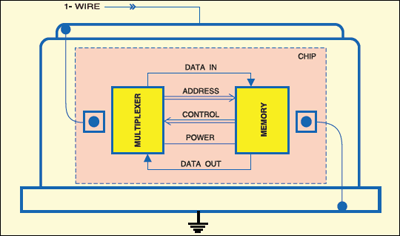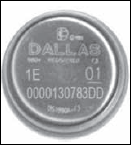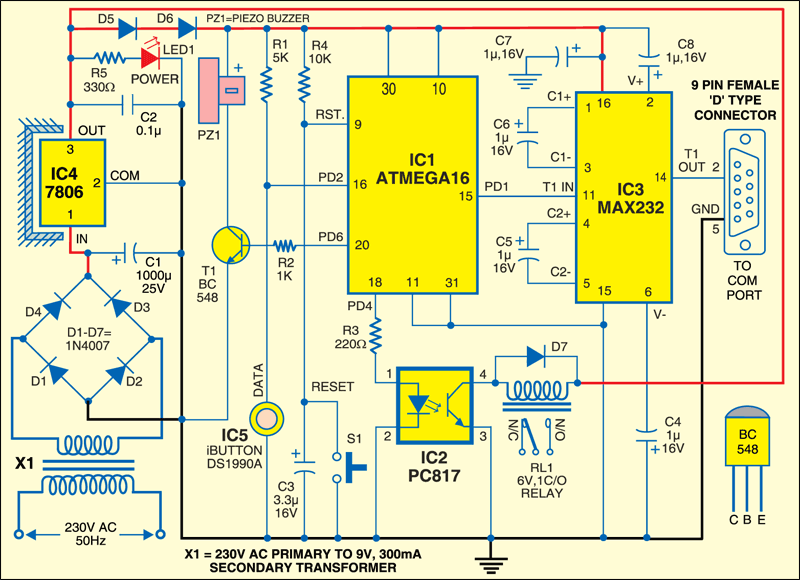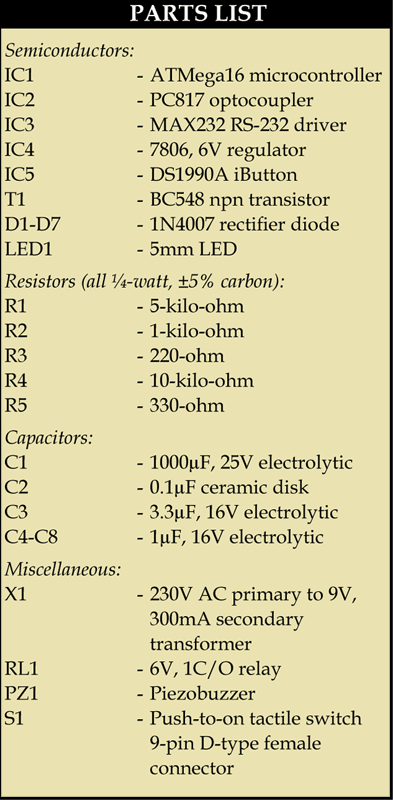 Access control forms a vital link in a security chain. Here we describe a secure digital access system using iButton that allows only authorised persons to access a restricted area.
Access control forms a vital link in a security chain. Here we describe a secure digital access system using iButton that allows only authorised persons to access a restricted area.
The iButton is used here as a key to the access control system. Its unique identification (ID) number is used for authorisation. On detection of an authorised iButton, the system allows access. Thereafter, an automated lock key locks the system again. The system is permanently halted after five repeated false attempts. A service control unit built around an AVR microcontroller is interfaced to the iButton with 1-wire protocol for authentication of user validation of data.
iButton DS1990A
Here we have used the iButton DS1990A from Dallas Semiconductor (MAXIM). Its block diagram is shown in Fig.1.

An iButton is a chip housed in a stainless-steel enclosure (refer Fig.2). The electrical interface is reduced to the absolute minimum, i.e., a single data line plus a ground reference. The energy needed for operation is taken from the data line. The DS1990A serial number iButton is a rugged data carrier that acts as an electronic registration number for automatic identification. It contains a unique ROM code that is 64-bit long as shown in Fig.3. The first eight bits are a 1-wire family code. The next 48 bits are a unique serial number. The last eight bits are a cyclic redundancy check (CRC) of the first 56 bits.

Data is transferred serially via the 1-wire protocol, which requires only a single data lead and a
ground return. The iButton DS1990A provides the additional 1-wire protocol capability that allows the search ROM command to be interpreted by the DS1990A.

Circuit description
Fig.4 shows the circuit of the secure digital access system using iButton. The circuit is built around an ATmega16 microcontroller.


The ATmega16 is an 8-bit microcontroller based on the AVR enhanced RISC architecture that executes powerful instructions in a single clock cycle. It has 16kB in-system programmable flash program memory with read while- write capabilities, 512 bytes of EEPROM, 1kB SRAM, 32 general purpose input/output (I/O) lines, 32 general-purpose working registers,three flexible timers/counters with compare modes, internal and external interrupts, a serial programmable. USART, a byte-oriented two-wire serial interface, a programmable watchdog timer with internal oscillator, an SPI serial port and six software-selectable power-saving modes.






